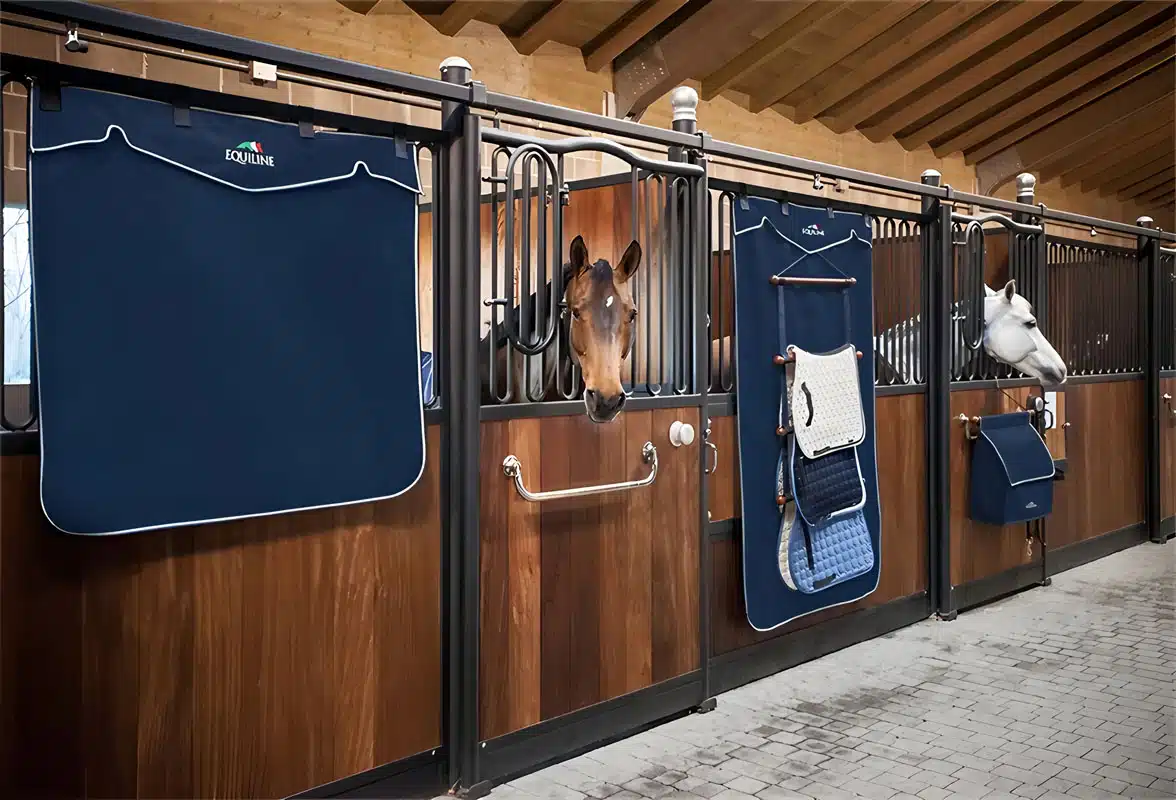Best Woods for Stable Construction
Selecting the right material for horse stables directly impacts safety, durability, and overall project cost. B2B buyers and builders should focus on wood types that balance structural strength, resistance to wear, and ease of procurement. The table below compares common options, outlining how each performs in real-world stable construction and where it fits best within budget and operational priorities.
| Wood/Material Type | Key Considerations for Stable Construction |
|---|---|
| Southern Yellow Pine | A strong softwood that holds nails well, works easily with common tools, and keeps framing costs down. Needs to be high grade to avoid warping or twisting, making it safer than lower-grade softwoods. Readily available in North America, which simplifies sourcing and logistics. |
| Domestic Hardwoods | Dense species like oak and cherry offer superior durability and decay resistance in high-impact areas. They are heavier and more expensive, affecting installation labor and budgets. FSC-certified supply can meet sustainability requirements, though availability varies by region. |
| Exotic Hardwoods | Premium-grade woods with exceptional resistance to chewing, impact, and moisture, delivering maximum lifespan in demanding applications. High procurement costs and limited supply require careful supplier vetting, especially in projects with tight schedules or environmental scrutiny. |
| HDPE (Plastic Lumber) Alternatives | Moisture- and rot-resistant panels that are easy to clean, improving stall hygiene. Often produced from recycled materials and UV-stable, making them suitable for outdoor use. Cost is higher than wood and the non-traditional look may not suit all buyers, but adoption is growing in prefab and portable stable builds. |
| Woods to Avoid & Selection Criteria | Avoid toxic species like maple and black walnut, which can harm horses if chewed. Choose materials based on strength, decay resistance, installation ease, upkeep requirements, cost, and local supply. Compliance with safety and environmental standards supports animal welfare and long-term sustainability goals. |
Pros, Cons, and Costs
Wood remains a preferred choice for horse stable construction in many operations, but it requires a balanced assessment of benefits, upkeep, and cost. Decision-makers should weigh insulation, aesthetics, and adaptability against durability risks and lifetime maintenance expenses. Selecting the right wood type and finish, aligned to climate conditions, operational priorities, and budget, protects both animal safety and asset value.

Advantages of Using Wood in Horse Stables
Wood’s natural thermal insulation stabilizes stable temperatures year-round, cutting load on HVAC systems and shielding horses from climate stress. In portable stable projects, this insulation consistently supports horse comfort and health. Its sound-dampening qualities control internal noise, and well-ventilated designs improve airflow to reduce respiratory risks. Aesthetically, wood integrates with rural settings and can enhance property value. From a practical angle, its workability enables on-site adjustments and custom stall layouts without heavy tooling, giving teams flexibility in design.
Challenges and Maintenance Considerations
Wood requires scheduled protective treatments—painting, staining, or sealing—to resist rot and pests. Skipping maintenance accelerates damage, particularly in damp or insect-prone areas. Set a fixed treatment cycle to prevent structural compromise. Moisture and impact from horses remain primary hazards; smooth finishes and reinforced kick boards reduce splinter risk. Hardwoods withstand wear better but raise costs, while softwoods lower upfront spend yet demand more frequent upkeep.
Cost Factors and Investment Outlook
Wood builds generally cost more upfront than metal barns, with ongoing maintenance adding to total ownership expense. Material choice drives both performance life and repairs—low-grade, untreated lumber often erodes budgets over time. High-grade hardwoods deliver durability with reduced upkeep but can double material expenditure. Many operators still select wood for its traditional look and insulation, prioritizing animal welfare and long-term asset value over short-term savings.
Key Factors When Selecting Wood for Stables
Match wood properties to climate—solid insulation excels in regions with extreme temperature swings. Factor total life-cycle costs to avoid overruns from repairs and replacements. Choose smooth, sturdy lumber paired with quality stall linings to minimize injury when horses kick or rub against walls. Compare hardwood versus softwood on durability, lifespan, and cost to strike the right balance between safety and profitability.
Sourcing Quality Lumber
The lumber you choose for horse stable construction will determine safety, service life, and long-term maintenance costs. Poor selection can result in warped panels, splinter hazards, and costly rebuilds. Prioritize species suitability, specify the correct grade, evaluate modern material alternatives, and vet supplier practices before issuing bulk purchase orders.
Choosing the Right Wood Species
Match species to operational demands and climate conditions. Southern Yellow Pine is cost-effective and widely available, but only in top grade to limit warping and shrinkage. Domestic hardwoods like oak or mahogany offer superior durability for stall dividers and high-traffic zones. Exotic options such as Brazilian hardwood and sapele provide extreme density and resilience for demanding environments but at premium cost. Avoid species like black walnut or certain maples due to equine toxicity risks or poor wear performance.
Understanding Lumber Grades and Quality
Specify #1 select or machine-graded lumber for high-impact surfaces such as doors and stall linings to eliminate defects and reduce splinter risk. These grades improve structural reliability, protect horses from injury, and minimize repair cycles.
Considering Alternative Materials
High-density polyethylene (HDPE) lumber resists moisture, cleans quickly, and supports sustainable sourcing. Although initial costs can exceed wood, its low maintenance and sanitation advantages cut lifetime ownership expenses.
Supplier Selection and Sourcing Practices
Partner with suppliers capable of fulfilling bulk orders with precision and offering customization such as tongue-and-groove profiles or double-sided finishes to accelerate installation. Insist on kiln-dried, properly seasoned stock, preferably FSC-certified. Assess structural integrity, resistance to decay and warping, climate suitability, and ease of handling. Favor vendors with consistent reliability, competitive lead times, and committed post-sale support to prevent delays and protect budgets.
Durable and Custom Horse Stables Built for Any Climate
DB Stable delivers high-quality, weather-resistant horse stables designed to meet global standards. From scorching heat to freezing winters, every stable offers safety, comfort, and easy installation tailored to your region’s needs.

Maintenance and Treatment
Wood components in horse stables demand consistent, proactive upkeep to avoid expensive repairs, protect animal safety, and maximize asset longevity. Prioritize preventive maintenance, timely treatments, and environmental control to minimize downtime and maintain structural and hygienic standards season after season.
Scheduled Inspections and Cleaning
Align inspections with seasonal changes, conducting a full spring review for water staining, sun bleaching, pest activity, and structural fatigue, especially in exposed panels and joints, and document issues before they warrant replacement. Daily mucking prevents moisture and ammonia penetration; supplement with a weekly deep clean including power washing walls and partitions to remove biofilm and dirt that foster mold or insects—supporting horse health and reducing respiratory or skin risks from damp, contaminated wood.
Surface and Preservative Treatments
Use high-grade equine paints or penetrating stains to block moisture, filter UV exposure, and resist microbial buildup, reapplying every few years or sooner in high-sun or heavy-rain regions. Treat flooring and framing with preservatives to prevent fungal decay, insect damage, and chewing; neglecting this makes sanitation harder and can lead to poor traction, heightening liability and adding avoidable costs.
Repairs, Replacements, and Environmental Controls
Replace damaged sections with structural-grade timber matching original specifications, starting with high-impact zones like kickboards and stall linings to prevent injury and extend service life; inferior substitutions weaken stability and drive repeated fixes. Ensure proper drainage moves water away from the building and pair with sufficient ventilation to limit humidity and decay. Store feed off the ground and away from timber walls to deter pests and moisture exposure—turning short-term repairs into long-term structural reliability.
Common Issues
Repeated issues in wooden stable construction often stem from avoidable mistakes that drive up maintenance costs, compromise safety, and shorten facility lifespan. Years of supplying stables to harsh climates show where builders and DIY teams must act decisively before and during construction.
Moisture and Drainage Problems
Low sites or poor drainage cause water pooling, muddy paddocks, and weakened foundations. Damp accelerates wood decay, fosters mold, and increases harmful bacterial growth. Always site stables on high ground and install effective runoff controls—such as French drains—before building starts.
Wood Selection and Treatment Risks
Inappropriate lumber can threaten structural integrity and horse health. Some woods are toxic when chewed. Use pressure‑treated boards only out of horses’ reach to avoid chemical ingestion. Untreated timbers may appear cheaper but quickly rot in humid conditions and attract pests, resulting in premature and costly replacements.
Porosity and Cleanliness Challenges
Unsealed wood absorbs liquids, locks in odors, and traps waste that attracts pests. Prevent hygiene issues by closing gaps at build stage, inspecting regularly, using fresh absorbent bedding, and removing waste promptly to limit moisture and infestation inside stalls.
Structural and Design Hazards
Poor layouts compromise welfare and worker safety. Low ceilings restrict air and light, raising respiratory and injury risks. Undersized stalls with inadequate ventilation create stress. Finalize plans that meet space and airflow standards before ordering materials.
Fire and Electrical Safety Concerns
Storing hay in stalls heightens fire risk and dust levels. Exposed wiring is another preventable hazard. Store hay separately and have licensed electricians install and shield wiring to meet equine facility safety codes.
Maintenance Challenges
Wood stables require scheduled inspections for rot, wear, and pests. Neglect leads to expensive emergency repairs and potential injuries. Commit to quarterly checks and proactive upkeep to protect horses and maintain long-term asset value.

FAQs About Wood for Stable Construction
Below are concise, field-tested answers to the questions professionals raise when selecting wood for horse housing. Each focuses on durability, cost-efficiency, and safety within equine facilities.
What is the most durable type of wood for horse stalls?
Hardwoods such as oak and cedar tolerate heavy impact and high moisture better than most alternatives. Their dense grain resists denting and wear, while natural rot and insect resistance reduces reliance on chemical treatments. Choosing premium, durable wood keeps stalls structurally sound and minimizes repair costs over time.
Should I use pressure-treated lumber inside the stable?
Pressure-treated lumber resists decay and insects but contains chemicals that can harm horses if chewed or rubbed. For interior walls, choose naturally resistant species or untreated boards sealed with a durable finish. If pressure-treated wood is the only option, fully seal the surface or install barriers to prevent contact while retaining structural benefits.
What wood is naturally resistant to rot and insects?
Cedar and redwood contain oils and tannins that repel fungus and insects, making them well-suited for damp environments. This reduces chemical treatments, keeps surfaces cleaner, and supports stable hygiene. Higher initial costs are offset by lower upkeep and longer service life.
Is oak a good choice for kickboards?
Oak’s strength and tight grain make it ideal for kickboards, where impact is highest. It resists splitting under force, protecting both horse and wall. A smooth, sealed finish prevents splintering and extends durability, ensuring long-term safety.
What is the most affordable wood for stable framing?
Pine and fir offer low-cost, readily available options for framing. They are lightweight and easy to work with, accelerating build time. As softer species, they require protective treatments or moisture-shielding design measures to maintain integrity without inflating the budget.
Final Recommendations for Stable Lumber Selection
Select lumber with a clear focus on safety, durability, and cost-efficiency from the outset. Match species and grades to climate conditions, ensure resistance to decay, and choose materials that can absorb daily impact in stalls and paddocks.
Use high‑grade hardwoods in high‑traffic zones and quality treated softwoods in lower‑stress areas to control budgets. Source from proven vendors with compliant grading, avoid toxic species, and protect exposed panels with coatings or kickboards. A well‑planned material mix backed by consistent maintenance will safeguard horses and maintain structural integrity for decades, making quality lumber a sound long‑term investment.









0 Comments